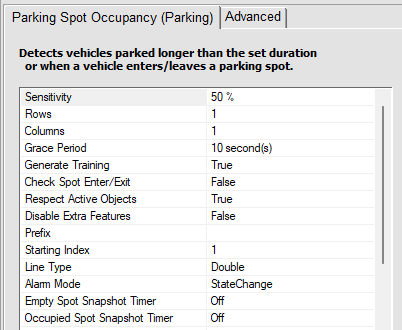Vehicle Service Time Event is available in intuVision VA’s Parking module.
Vehicle Service Time event monitors the selected vehicle service bays and wait areas, tracking service time, wait time, and the duration that bays or wait areas are empty. Service time event can be tied to a time period, or can generate an alert immediately upon an area getting occupied or empty.
Alerts generated upon state change along with the bay number, can be used to direct staff to assist waiting vehicles for mobile order waiting spots of restaurants or stores, to indicate that the customer is waiting for service. Similarly at guard stations or auto shops where vehicles check-in for service, these notifications are used to send the guard or attendant out when there is a vehicle present.
The recorded data with intuVision VA includes the entrance and exit time for each vehicle, the bay or zone number, and occupied and empty period durations. This data provides reporting on average service time, number of vehicles serviced, and total time a vehicle bay was empty. Optionally, snapshots can be saved for later verification and from which to gather vehicle details such as make and model. All data can be access through intuVision VA reporting, can be exported into CSV files, or can be accessed through intuVision Data API for ingestion into other data management applications.
Vehicle Service Time can be used for individual spots or with a grid for easy demarcation. intuVision VA classification learns what comprises a full vs. empty parking space and this allows tailoring detection to any scene. Selecting the prefix and starting index for the spots allows consistency across multiple events and camera views.
Optional settings are available to fine-tune the event, including:

When combined with output triggers, compound events, and unlimited object classification options, Vehicle Service Time Event can be further refined, to be used for meeting custom video analytics requirements with our off-the-shelf product without the need for any development time. For example, person activity detection can be used in conjunction with Vehicle Service Time to track the percentage of the active service time to wait time.